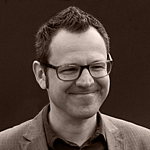
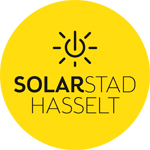
Joost Venken (Stad Hasselt – BE)
Hasselt Solar City – Visie & plan van aanpak
Joost Venken is Schepen van de Stad Hasselt met als bevoegdheden: energie, duurzaamheid, leefmilieu, dierenwelzijn, ontwikkelingssamenwerking en Domein Kiewit. Hij is initiatiefnemer van het project ‘SolarStad Hasselt’ waarbij Hasselt een stadslaboratorium wordt voor solartoepassingen en de ambitie heeft om de zonnestad van Vlaanderen te worden.
Dit initiatief past in de algemene visie van Stad Hasselt om in 2050 klimaatneutraal zijn.
Donderdag 4 mei 2017 om 14.20 uur
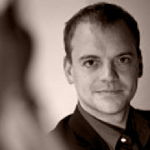
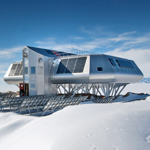
Geert Palmers (3E – BE)
Zonne–energie: van gesubsidieerde niche tot competitieve mainstream
Geert Palmers is CEO en mede–stichter van 3E, een onafhankelijk en multidisciplinair studiebureau rond windenergie, zonne–energie, powergrids en gebouwen (e.g. Princes Elisabeth ZuidPool-onderzoeksstation).
3E is actief in meer dan 40 landen, met hoofdzetel in Brussel en kantoren in o.a. Londen, Parijs, Delhi en Kaapstad.
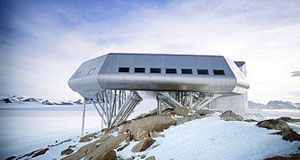
Donderdag 4 mei 2017 om 14.40 uur
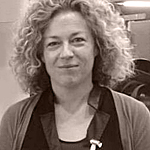
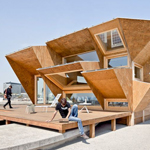
Prof.dr.ir.arch. Griet Verbeeck (UH-Arck – BE)
How you can get the sun in the training of (interior) architects
Civil engineer-architect, Griet Verbeeck, was scientific collaborator at the Division of Building Physics (KU Leuven) between 1991 and 2007 with a short stay in 2001 at the Energy Administration of the Brussels Capital Region. In 2007, she started her own research group on sustainable architecture at the PHL University College (now Faculty of Architecture and Art, Hasselt University)
When designing sustainable buildings, solar energy has an important role to play, both in a passive (optimizing solar heat gains, use of daylight) and an active way (thermal solar collectors, PV panels). So knowledge on the impact and opportunities of solar energy in buildings is indispensable for (interior) architects. This lecture gives an inspirational overview of different educational projects we have developed over the years to teach students in (interior) architecture how the benefits of the sun can be integrated in an intelligent and creative way into a design for the built environment.
Thursday 4th of May 2017 at 3.05 pm
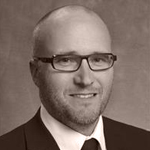
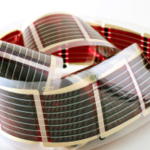
Frederik Krebs (infinityPV – DK)
Making a business out of printed photovoltaics
infinityPV ApS is a Danish start–up company — with a pioneering role in the commercialization of printed solar cells — founded in 2014 by Frederik C. Krebs (CEO) along with 31 co-owners. infinityPV has no external funding partners and is owned equally by every co–owner. It is a light structure that builds on being a movement of passionate individuals with a desire to follow the greatest ideas without any traditional boundaries.
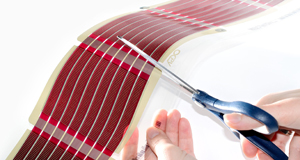
Organic solar cells (OPV) are a third generation printed solar photovoltaic technology for energy production in small-scale niche applications to large–scale installations such as building integrated photovoltaics (BIPV). The advanced OPV modules do not include toxic or scarce elements and offer a sustainable alternative to traditional solar energy harvesting technologies. These OPV modules offer unique characteristics such as flexibility, semi-transparency, freeform design, and a variety of colors.
Thursday 4th of May 2017 at 4 pm
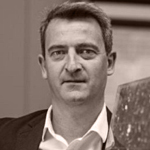
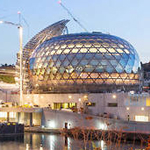
Laurent Quittre (ISSOL – FR)
Why buildings that generate electricity cost less?
Laurent Quittre is president and founder of ISSOL. He graduated in Economics from the H.E.C. of Liège. In 1994, he starts to work for EDS — Electronic Data Systems — as a business analyst for the banking sector. In 2005, he meets Ivan Schiemsky and they found ISSOL. As outsiders, they both have the firm intention to do things differently in the PV sector. The business model is based on the architectural relevance that they want to give to the PV technology.
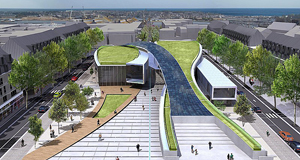
Laurent Quittre brings engineers and architects together. In April 2006, the production facility is up and running. ISSOL starts to make remarkable Building Integrated Photovoltaics (BIPV) projects with famous architects. According to Laurent Quittre PV is not technology but a new construction material.
Thursday 4th of May 2017 at 4.50 pm
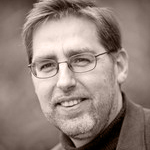
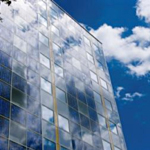
Prof.dr.ir. Jozef Poortmans (imec / Energyville – BE)
Building Integrated Photovoltaics BIPV
Jozef Poortmans received his degree in electronic engineering from the Catholic University of Leuven in 1985. He joined imec and worked on laser recrystallization of polysilicon and a–Si for SOI applications and thin–film transistors. In 1988 he began working on his PhD on strained SiGe layers. He was awarded his Phd in June 1993. Afterwards he joined the photovoltaics group, where he became responsible for the advanced solar cell group. Within this framework he started the thin–film crystalline Si solar cells activity at imec.
He also coordinated several European Projects in this area as part of the 4th and 5th European Framework Programs. In 2003 he became cluster coordinator of European projects in the field of thin–film solar cells. In 1998 he initiated the organic solar cells activity at imec, which was complemented by an activity dealing with III–V solar cells, which began in 2000. At the present time, Jozef Poortmans is scientific director photovoltaics at imec.
Curtain walls, louvers, roof tiles, railings … with integrated solar cells or modules. Architects more and more incorporate these elements in the design of new buildings. This so–called building integrated photovoltaics or BIPV is approaching a tipping point. Driven by the demand for net–zero energy buildings and by the EU directives and national legislation in this domain, contributing to a large scale development of solar energy, or being ideal for making eye–catching buildings: they will soon change our street view.
Thursday 4th of May 2017 at 4.25 pm
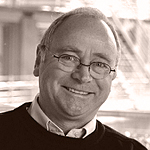
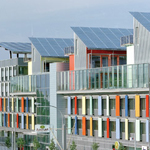
Arch. Rolf Disch (Freiburg – DE)
Keynote – The Solar Movement – Freiburg
Rolf Disch is an architect, solar energy pioneer and environmental activist who has contributed greatly to the advancement and efficiency of solar architecture internationally. As head of his own architecture firm, Rolf Disch Solar Architecture, Rolf Disch has led Germany as the solar pioneer in respect to residential, retail and commercial building and design. In 1994, Rolf Disch built the Heliotrope in Freiburg, which was the world’s first home to create more energy than it uses, as it physically rotates with the sun to maximize its solar intake. Rolf Disch then developed the concept PlusEnergy, making it a permanent goal for his buildings to produce more energy than they consume in order to sell the surplus solar energy back into the grid for profit.
An important milestone was the completion in 2004 of the 59 PlusEnergy home Solar Settlement and the 60,000 sq ft (5,600 m²) PlusEnergy-Sun Ship. In June 2009, Rolf Disch launched the 100% GmbH organization, with the aim to make Freiburg and its surrounding district the first 100% sustainable renewable energy region in the world.
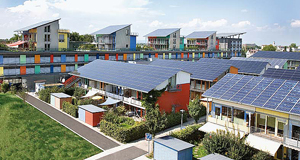
His pioneering Solar Movement that he started in Freiburg is of great inspiration for novel solar initiatives throughout the world.
Thursday 4th of May 2017 at 5.15 pm

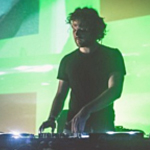
Kiani & His Legion
DJ–set
Kiani & His Legion, aka Thomas Neyens (during day time postdoctoral researcher at I-Biostat-UHasselt), has been making quite a name for himself throughout the last years.
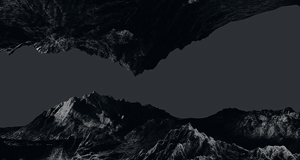
After being picked up by Red D on We Play House Recordings, he released on other renowned labels such as Defected Records and Eskimo Recording.
Thursday 4th of May 2017 at 6 pm
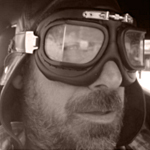
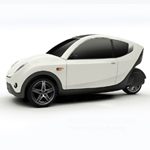
Xavier Van der Stappen (Ecar Belgian Green Vehicle – BE)
When dreams come through an electric mobility story. From ethnographical field studies to industrial project
Xavier Van der Stappen is the driving force behind ECAR333, the first electrical car designed and developed in Belgium. The ECAR333 was presented in World Premiere on the Car and Motor Show of Brussels in January 2017. The number ‘333’ refers to: 3 wheels, 300 km autonomy and 3 passengers. ECAR333 uses recycled and durable materials and is intended for the local market.
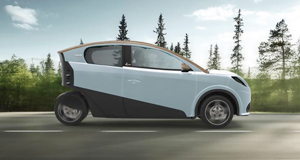
Xavier Van der Stappen is a man with a clear vision on sustainable development and a diverse track record: reporter, director, head of audio–visual–Doctors without border, designer of biodegradable sea kayaks, sailboats tester, producer, ethnographer, author of books, world eco–citizen, … After connecting Dakar to Brussels in 2009 and Copenhagen to Cape Town in 2010 with electric prototypes used as educational tools, Xavier Van der Stappen engages into the design and development of an urban electric vehicle, with the ECAR333 as current result.
Friday 5th of May 2017 at 2 pm
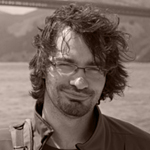
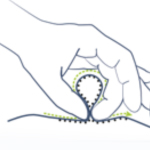
Dr. Florian Heller (UH–EDM – DE)
Needle and Stainless Steel Thread – The Current State of Textile Interfaces
Dr. Florian Heller is a Human Computer Interaction researcher, percussionist and self–declared nerd. Previously he was a researcher at RWTH–Aachen and currently he works at the Expertise Center for Digital Media at UHasselt.
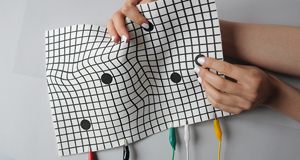
Since Google announced Project Jacquard, textile interfaces have reached a broad audience. But what does it mean to use your jacket as input device? Our clothing is a large surface that could potentially be used for input, for example, to extend the minimal screen real–estate of smartwatches. However, no commercial product has really hit the market. In this presentation Florian Heller will illustrate the state of the art of wearable sensing and the challenges we face on the road to successful commercial applications.
Friday 5th of May 2017 at 2.25 pm
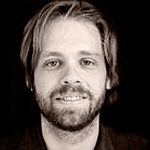
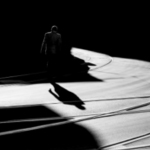
Erlend Mikael Sæverud (Photographer – NO)
Gate – the streets are lightened by quasars
Erlend Mikael Sæverud is a fine art photographer from Oslo, Norway. Sæverud graduated at Bilder Nordic School of Photography in 2011 and is now represented by several galleries in Norway and abroad.
His work is often based on street photography and his images are intuitive recognitions of something personal — an inner space manifested in the public space. Through photography he aims to see himself and the world for the first time over and over again to get closer to a reality that is not learned through culture.
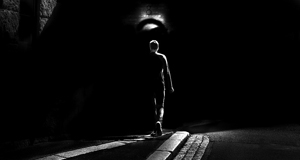
Inspired by science fiction, surrealism, and film noir, the project ‘Gate’ is based upon a fictional book «The book of Quasar». The streets are lightened by quasars, and black holes are passages to parallel worlds.
Friday 5th of May 2017 at 3.50 pm
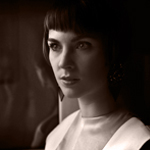
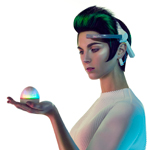
Jasna Rok (High Tech Fashion Designer – BE)
The future of fashion
Jasna Rok is a young an energetic pioneer in combining innovative fashion and cutting-edge technology. Not only in creating unique projects and collections, but also in bringing these to life by using techniques such as virtual and augmented reality. She has a strong vision on the clothing of the future and how it can add value to our daily lives.
To achieve more and think further, Jasna Rok likes working closely together with professional partners from around the globe. These collaborations and projects brought her a lot of recognition and exposure. As a result, she received various awards, gives lectures and gets invited to big events in different fields. In January 2016, aged 23, she founded Jasna Rok, the first Fash Tech design studio in Belgium.
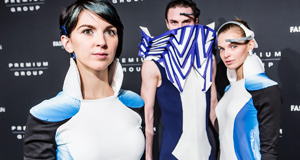
Friday 5th of May 2017 at 2.50 pm
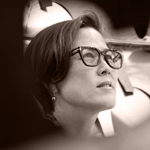
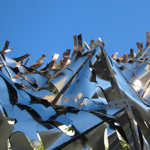
Prof.dr. Doris Kim Sung (USC/DOSU – USA)
Keynote – Smart materials for smart bio-inspired architecture
After receiving her B.A. at Princeton University and M.Arch. at Columbia University, Doris Sung worked in various offices in cities across the U.S. before arriving in Los Angeles in 2001. She developed her research focus while teaching at University of Southern California (USC), the Southern California Institute of Architecture (SCI–Arc), University of Colorado and the Catholic University of America. In 1999, she opened her office, dO|Su Studio Architecture, and soon received many AIA and ASID awards for her work, including the prestigious accolades of AIA Young–Designer–of–the–Year, ACSA Faculty Design Award, R+D Honorable Mention from Architect Magazine and [next idea] award from ARS Electronica.
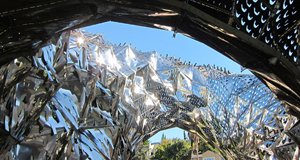
Currently, she is working on developing smart thermobimetals and other shape–memory alloys, unfamiliar materials to architecture, as new materials for the "third" skin (the first is human flesh, the second clothing and the third architecture). Its ability to curl when heated allows the building skin to respond for purposes of sun–shading, self–ventilating, shape–changing and structure–prestressing. Her work has been funded by the national AIA Upjohn Initiative, Arnold W. Brunner Grant, Graham Foundation Grant, Architectural Guild Award and USC ASHSS and URAP Awards.
Friday 5th of May 2017 at 4.40 pm
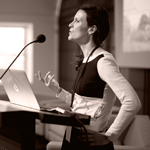
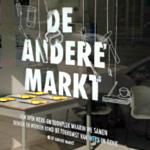
Dr. Liesbeth Huybrechts (UH–Arck – BE)
Design/Work in our Future Cities
Liesbeth Huybrechts is postdoctoral researcher in the areas of participatory design, human–computer interaction and spatial transformation processes in the research group Arck, University of Hasselt. She is involved in the Living Lab De Andere Markt (The Other Market), a space for reflection and action on the future of work. She is also part of the research project Traders dealing with Participatory Design and Art in Public Space (Marie Curie ITN). Together with Thomas Laureyssens she designed the frequently used participatory mapping tool MAP–it. As a freelancer she is active in exhibitions, workshops and writing. In the past, she taught in the Social Design Masters, Design Academy Eindhoven in the Interaction Design Department (LUCA, KULeuven). She co–founded the research group Social Spaces exploring the social qualities of design and art.
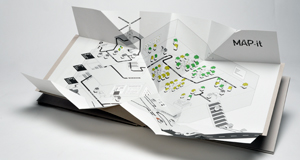
This talk discusses the challenges of designing for work in our cities in 'smart' ways. More than ever, designers/architects need to navigate between many and often invisible local and supra–local ecological, social, technological and economical agendas that are associated with (re)integrating workspaces in the daily life of the city. This forces them to design new types of (digital) frameworks, tools and techniques to explore and align these agendas in participatory ways, while giving form to 'space' for work. This talk will look into some remarkable (historical) examples and own case studies, to discuss how participatory frameworks, tools and techniques support 'smart' ways of designing for work in future cities.
Friday 5th of May 2017 at 4.15 pm
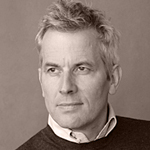
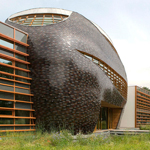
Thomas Rau (RAU – NL)
Closing Keynote – Guided by the Future
Thomas Rau is entrepreneur, architect, innovator and visionary. His motto is ‘guided by the future’: his decisions and actions are not determined by what is deemed possible or culturally acceptable now, but by what is necessary for the future.
For years Rau has contributed to national and international discussions about sustainability. He is promoting the use of renewable energy in the built environment and seeks to address the increasing worldwide resource scarcity. Putting words into action, RAU Architects have been on the forefront of designing environmentally conscious buildings and healthy indoor climates since 1992. The Oneplanetarchitecture Institute (OPAi) was founded in 2008, focusing on social and economic questions of our time with regard to architecture. RAU and OPAi have contributed several innovations and set new standards first in the field of CO2–neutral and energy neutral building, later for energy positive building and more recently circular architecture.
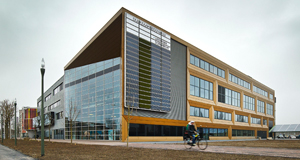
Rau argues that our so–called energy problem can be addressed, because there is more than enough energy from renewable sources. It’s our attitude that fails us in this regard and our unwillingness to fully embrace renewable energy in its various forms. While energy doesn’t need to be a problem, the increasing scarcity of raw materials is much more acute. As an entrepreneur he doesn’t feel threatened by these shortages but sees opportunities. Due to the global scope of material scarcity, Rau wants to address this issue on a global scale. That’s why he established Turntoo, a company focussing on closing material loops and developing business models to put the circular economy into practice.
He was elected as Dutch Architect of The Year 2013 and awarded with the ARC13 Oeuvre Award for his widespread contribution in both promoting and realising sustainable architecture in the last 20 years.
Friday 5th of May 2017 at 5.35 pm
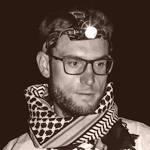
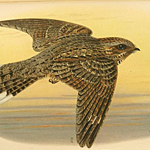
Ruben Evens (UHasselt – BE)
Op zoek naar de Nachtzwaluw – Een mysterieuze wereldreiziger
Tot op vandaag is er weinig bekend over de nachtzwaluw. Wel bestaan er allerlei mythische verhalen over de vogel. Bioloog Ruben Evens (UHasselt – Centrum voor Milieukunde) wijdt er een doctoraatstudie aan. Hij bestudeert o.a. het ruimtegebruik van de nachtzwaluw, hun eetgewoonten en de populatiesamenstelling. Dit is belangrijk in relatie tot het veranderend klimaat en milieu.
Nooit eerder werd onderzoek gevoerd naar de nachtzwaluw en de vogel is zeldzamer dan wordt gedacht. Hierbij wordt gebruik gemaakt van gesofisticeerd materiaal (o.a. zendertjes met een zonne–paneeltje). Enkele jaren geleden, trok Ruben Evens naar het Nechisar National Park in Ethiopië voor ‘Expedition solala’ met als doel de zoektocht naar ‘Camprimulgus solala’, een nachtzwaluwsoort die 25 jaar geleden werd ontdekt maar sindsdien niet meer gezien is. Zowat de heilige graal van de ornithologie.
Zaterdag 6 mei 2017 om 14.00 uur
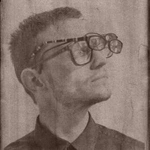
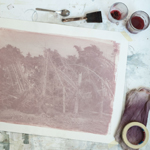
Kristof Vrancken (Luca School of Arts – BE)
The Sustainist Gaze – Eco–fotografie met natuur en jenever
Kristof Vrancken studeerde fotografie aan de LUCA School of Arts, waar hij sinds 2008 actief is als onderzoeker en docent. Daarnaast is hij werkzaam als freelance– en kunstfotograaf. In zijn artistieke werk verkent hij de vergeten ‘tussenruimtes’ van de samenleving. Zo onderzoekt hij de relatie tussen de mens en zijn omgeving, vaak met een vleugje absurditeit en humor.
In 2015 startte Kristof Vrancken een doctoraat in de onderzoeksgroep Inter–Actions op het LUCA School of Arts. In zijn onderzoek, getiteld ‘The Sustainist Gaze’, dompelt hij zich in de dialoog tussen het fotografische beeld en het gebied van maatschappelijkritische design. In zijn werk neemt de relatie tussen natuur en vooruitgang dan ook een centrale plaats in.
Kristof Vrancken onderzoekt natuurlijke methoden voor het ontwikkelen van fotografische beelden. Hierbij experimenteert hij met het anthotype proces dat pure en natuurlijke ingrediënten gaande van kleurstof uit planten tot jenever.
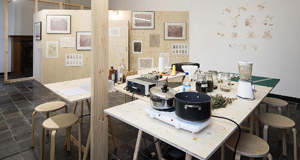
Zaterdag 6 mei 2017 om 14.35 uur
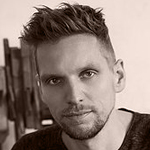
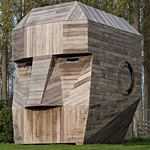
Frits Jeuris (Creatieve herbestemmer – BE)
Think a head – Materialen met een verleden voor een nieuwe toekomst
'Think a head' is een kunstwerk van Frits Jeuris. Het iconisch hoofd van gercycleerd hout telt twee verdiepingen, waarbij in de hersenruimte kan gebrainstormd worden. Al van kindsbeen af is Frits Jeuris aan het bedenken en maakt hij beelden en kunstwerken met alles wat hij vindt. Toen hij een prille twintiger was richtten zijn broer en hij een firma op die auto’s en vrachtwagens kocht en verkocht. De zaken gingen goed, maar na twaalf jaar stond Frits op een dag op en nam hij het besluit de ‘ratrace called life’ vaarwel te zeggen en het roer volledig om te gooien. Hij voelde dat hij was weggetrokken van wie hij in wezen was.
Frits besloot zijn eigen instinct te volgen en gewoon de dingen te gaan doen die hij wilde doen. Hij begon zijn eigen omgeving te creëren en maakte hiervoor gebruik van de materialen en ontmoetingen die op zijn pad kwamen. Met succes. Ondertussen doet hij dat samen met zijn compagnon de route en levensgezellin Tanja Jordens. Samen zijn ze al vier seizoenen te zien in het tv–programma ‘Baksteen in de maag’ waarbij ze in iedere aflevering mogelijkheden laten zien in plaats van beperkingen.
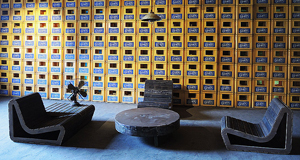
Voor de toekomst van onze planeet waarbij op een andere manier dient worden nagedacht over het gebruik van materialen, is Frits Jeuris een authentieke kunstenaar die vooruit denkt (he thinks ahead).
Zaterdag 6 mei 2017 om 15.00 uur
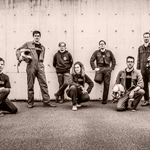
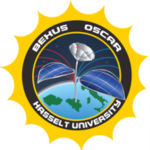
Miguel–Angel Beynaerts, Ilaria Cardinaletti, Rob Cornelissen, Jaroslav Hruby, Steven Nagels, Dieter Schreurs, Jelle Vodnik, Tim Vangerven & Koen Wouters (UHasselt)
ESA–BEXUS project: OSCAR – zonne–energie voor de planeet aarde en verder
Zonne–energie is ontegensprekelijk één van de belangrijkste en duurzaamste oplossingen voor de globale energie– en klimaatuitdagingen waar onze planeet voor staat. Nieuwe generatie printbare, plooibare en ultra–dunnen zonnecellen kunnen bovendien leiden tot tal van nieuwe toepassingen, gaande van energie–bevoorrading voor draag bare elektronica (smartphones, tablets, …) tot grensverleggende toepassingen voor toekomstige ruimtereizen. Printbare organische en perovskiet–zonnecellen zijn namelijk de wereldkampioenen qua verhouding energie–opbrengst versus gewicht. Voor toekomstige ruimtevaartmissies hebben deze zonnecellen dus de bijzondere voordelen dat ze een ultra–licht gewicht hebben, plooibaar en uitvouwbaar zijn en bovendien ter plaatse (in ruimteschepen of in ruimtestations op bijvoorbeeld de Maan of op Mars) kunnen geprint worden.
Door deelname aan het BEXUS–programma (Balloon Experiments for University Students) van de Europese ruimtevaartorganisatie ESA, hebben een team van negen UHasselt–doctoraatstudenten en studenten Fysica (Miguel–Angel Beynaerts, Ilaria Cardinaletti, Rob Cornelissen, Jaroslav Hruby, Steven Nagels, Dieter Schreurs, Jelle Vodnik, Tim Vangerven & Koen Wouters) een wereldrecord gebroken qua gebruik van printbare zonnecellen op grote hoogte. Met het OSCAR–project (Optical Sensors based on CARbon Materials) hebben ze voor het eerste de prestaties van printbare zonnecellen en van een nieuwe magnetische–veldsensor bestudeerd in echte ruimtevaartcondities. Vanuit het lanceerstation Kiruna in Zweden werd een onderzoeksballon in de stratosfeer gebracht — op 32 kilometer hoogte (3x hoogte van vliegtuigtrajecten) — waarbij extreme condities heersen zoals lage luchtdruk, lage temperaturen (tot wel –60 graden Celsius) en een pak meer straling van de zon.
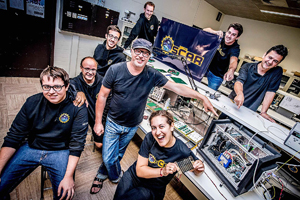
Het UHasselt–team stuurde overigens niet alleen zonnecellen en een diamant–magnetometer de stratosfeer in voor onderzoek. Ook enkele ‘boodschappen van hoop’ én liedjesteksten (onder meer ‘Satelliet Suzy’ van Noordkaap) gingen mee de gondel van een vierkante meter groot in. Deze gondel zal te zien zijn tijdens X-Festival.
Zaterdag 6 mei 2017 om 15.55 uur
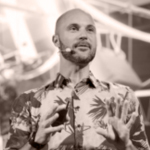
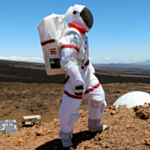
Angelo Vermeulen (Space system onderzoeker – BE)
Een interstellaire toekomst
Angelo Vermeulen is een space systems onderzoeker, community artist en TED Senior Fellow. In 2013 was hij Crew Commander van de eerste NASA HI–SEAS Mars simulatie in Hawaii. Angelo Vermeulen werkt momenteel aan zijn doctoraatstudie aan de TUDelft met als onderwerp: ‘interstellair reizen’.
Tijdens deze lezing gaat Angelo Vermeulen dieper in op zijn hybride werk waarin hij kunst, wetenschap en cross–culturele samenwerking combineert. Hij bespreekt en illustreert een aantal recente projecten, met speciale aandacht voor ruimtevaart en science–fiction.
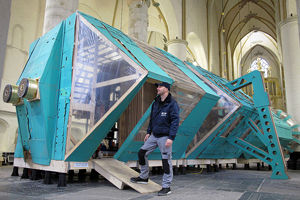
Zaterdag 6 mei 2017 om 16.20 uur